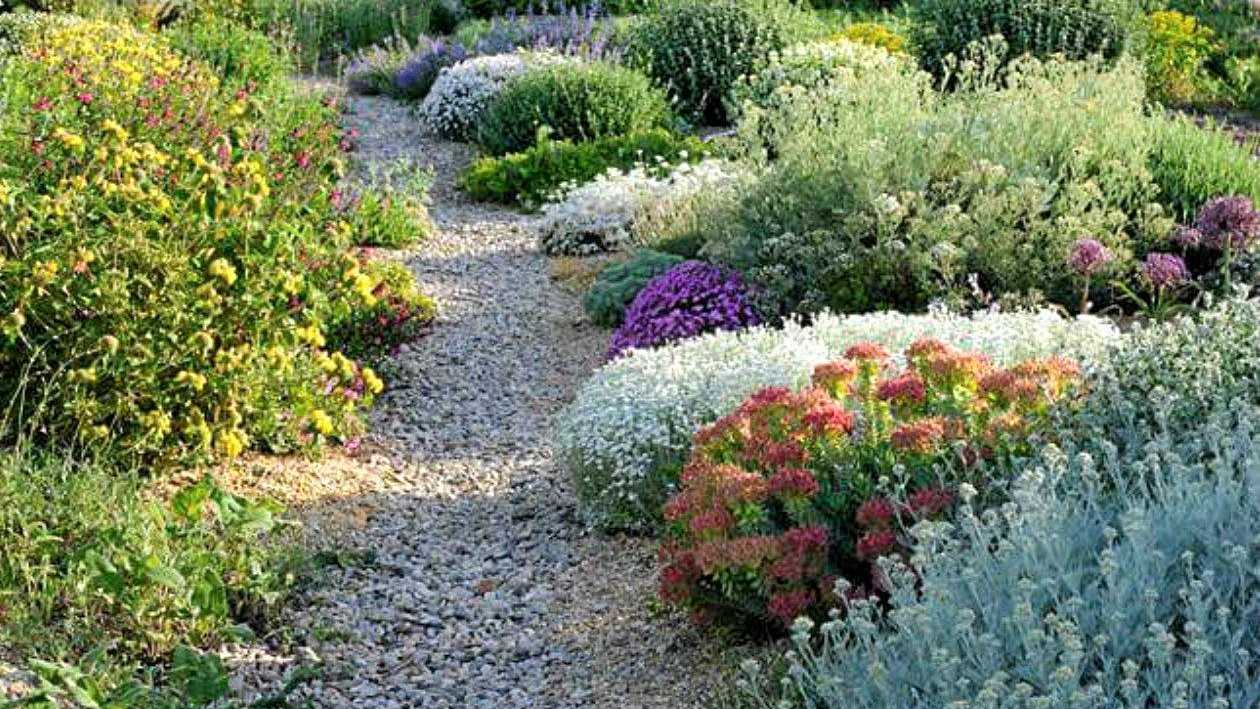How to Create a Drought-Resistant Garden: A Comprehensive Guide

Imagine a garden that thrives even in the harshest of summers, a sanctuary that requires minimal water yet blooms with vibrant colors and lush greenery. Creating a drought-resistant garden is not just about surviving dry spells; it's about embracing a sustainable and beautiful landscape that conserves water and reduces your environmental footprint. Let's dive into the world of drought-resistant gardening and discover how you can transform your outdoor space into a low-water oasis.
Understanding Drought-Resistant Gardening
What is a Drought-Resistant Garden?
A drought-resistant garden, also known as a xeriscape design, is a landscape that is specifically designed to reduce the need for supplemental water from irrigation. It focuses on using drought-tolerant plants and efficient watering techniques to create a sustainable and low-maintenance garden.
Why Choose a Drought-Resistant Garden?
Choosing a drought-resistant garden is not just a practical decision; it's an environmentally conscious one. With water conservation becoming increasingly important, a drought-resistant garden helps you save water, reduce your utility bills, and contribute to a greener planet.
Planning Your Drought-Resistant Garden
Assess Your Site
Before you start planting, it's crucial to assess your site. Consider factors like sunlight exposure, soil type, and drainage. Understanding your garden's unique conditions will help you choose the right plants and design elements.
Choose the Right Plants
Selecting drought-tolerant plants is the cornerstone of a successful drought-resistant garden. Look for plants that are native to your region, as they are naturally adapted to the local climate. Some popular drought-tolerant plants include:
- Succulents: These plants store water in their leaves and stems, making them ideal for dry conditions.
- Native Grasses: They require minimal water and provide a natural, rustic look.
- Drought-Tolerant Shrubs and Trees: Plants like lavender, rosemary, and olive trees are excellent choices for a low-water garden.
Designing Your Garden
When designing your drought-resistant garden, consider the principles of xeriscape design. Group plants with similar water needs together to optimize water usage. Use mulch to retain moisture and suppress weeds. Incorporate hardscaping elements like paths, patios, and rock gardens to reduce the amount of water-dependent greenery.
Implementing Water Conservation Techniques
Efficient Irrigation
Efficient irrigation is key to a successful drought-resistant garden. Consider installing a drip irrigation system, which delivers water directly to the roots of your plants, minimizing evaporation and runoff. Timers and sensors can help you automate watering, ensuring your plants get just the right amount of water.
Collecting Rainwater
Harvesting rainwater is an excellent way to supplement your garden's water needs. Install rain barrels to collect water from your roof, and use it to water your plants during dry spells. This not only conserves water but also reduces your reliance on municipal water supplies.
Mulching
Mulching is a simple yet effective technique for conserving water. A layer of organic mulch, such as wood chips or straw, helps retain moisture in the soil, reduces evaporation, and suppresses weeds. It also adds nutrients to the soil as it decomposes.
Maintaining Your Drought-Resistant Garden
Regular Pruning
Regular pruning is essential for maintaining the health and appearance of your drought-resistant garden. Remove dead or damaged branches to encourage new growth and prevent disease. Pruning also helps control the size and shape of your plants, ensuring they fit well within your garden design.
Monitoring Soil Moisture
Monitoring soil moisture is crucial for the success of your drought-resistant garden. Use a moisture meter to check the soil's water content regularly. This will help you determine when and how much to water your plants, preventing overwatering and underwatering.
Adapting to Changing Conditions
Gardens are dynamic environments, and your drought-resistant garden is no exception. Be prepared to adapt to changing conditions, such as fluctuations in weather patterns or the introduction of new pests. Stay informed about local gardening trends and best practices to ensure your garden thrives.
Conclusion
Creating a drought-resistant garden is a rewarding journey that combines beauty, sustainability, and water conservation. By choosing the right plants, implementing efficient watering techniques, and maintaining your garden with care, you can create a lush, low-water oasis that thrives even in the driest of conditions. Embrace the challenge and reap the benefits of a garden that is not only beautiful but also environmentally responsible.
FAQs
What are some common drought-tolerant plants? Common drought-tolerant plants include succulents like aloe and agave, native grasses, and drought-resistant shrubs and trees like lavender, rosemary, and olive trees.
How can I collect rainwater for my garden? You can collect rainwater by installing rain barrels or cisterns that capture water from your roof. This water can then be used to irrigate your garden during dry periods.
What is the best type of mulch for a drought-resistant garden? Organic mulches like wood chips, straw, or compost are ideal for drought-resistant gardens. They help retain moisture, suppress weeds, and add nutrients to the soil.
How often should I water my drought-resistant garden? The frequency of watering depends on the specific plants and local climate conditions. Generally, drought-resistant gardens require less frequent watering than traditional gardens. Use a moisture meter to determine when your plants need water.
Can I still have a lush garden with drought-resistant plants? Yes, you can have a lush garden with drought-resistant plants. By selecting the right plants and implementing efficient watering techniques, you can create a beautiful and sustainable garden that thrives even in dry conditions.


By following these guidelines and embracing the principles of drought-resistant gardening, you can create a stunning and sustainable outdoor space that not only conserves water but also brings joy and beauty to your life. Happy gardening!
0 Response to "How to Create a Drought-Resistant Garden: A Comprehensive Guide"
Post a Comment